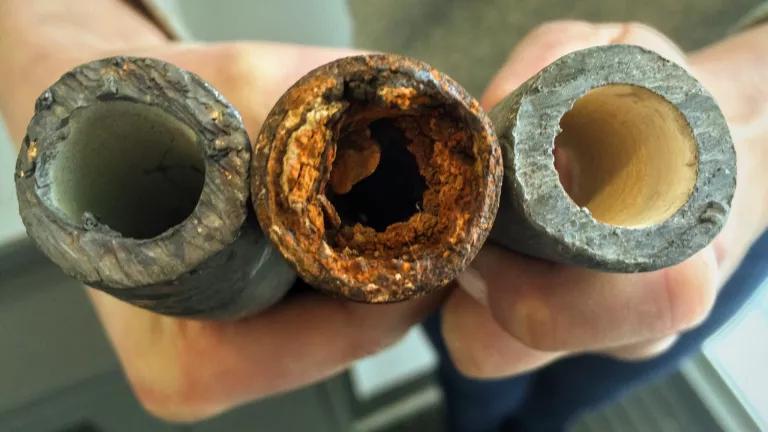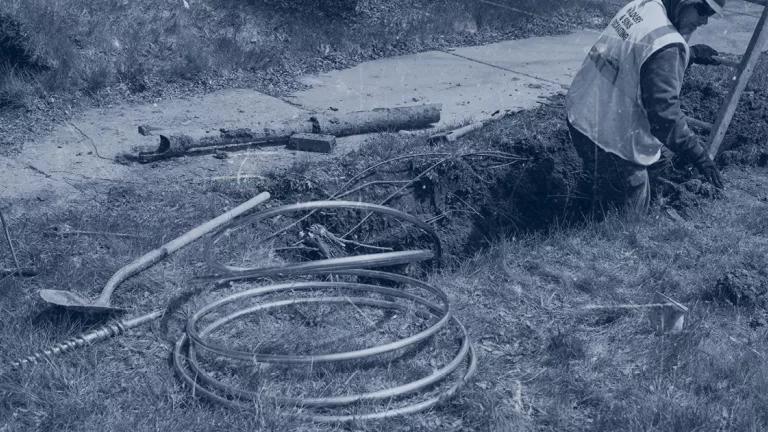
Examples (from left) of a lead pipe, a corroded steel pipe, and a lead pipe treated with protective orthophosphate
U.S. EPA Region 5
The Bipartisan Infrastructure Law that was enacted at the end of 2021—formally called the Infrastructure Investment and Jobs Act (IIJA)—will invest $15 billion to remove and replace lead service lines around the country. There is also an additional $11.7 billion in the law that can be spent on any drinking water infrastructure priority, including removal of lead service lines if a state decides to spend the funds on that. A lead service line is the pipe that runs from a water main in the street to a residence or other building. These lead pipes threaten the health of tens of millions of Americans, especially children and people residing in low-income communities, because the lead can leach or flake off and enter the drinking water.
The mighty investment in the IIJA will protect our families’ health and create good living-wage jobs for tens of thousands of Americans. We must ensure that these funds, especially grants, fully remove lead service lines and are prioritized to help the disadvantaged communities that need it most.
To this end, NRDC and its partners have compiled various resources to assist community residents, water systems, and states to establish gold-standard lead service line replacement programs.
Resources

Meeting the Challenge of Lead Service Line Replacements
States and water systems around the country are gearing up for implementation.

Principles for Lead Service Line Replacements
What have we learned about how to fix toxic lead in our drinking water? Here are some lessons and recommendations for quickly, efficiently and equitably removing lead pipes from the ground.

New SPA Research Addresses Environmental Justice
Homeowners in lower-income neighborhoods are more likely than wealthier residents to suffer the harmful effects of lead in their drinking water even after sections of their services lines are replaced.

The Hidden Costs & Dangers of Partial Lead Pipe Replacements
The only way to protect public health is to completely remove lead drinking water pipes, which is why we are calling for a ban on partial replacements.

Lead Pipes Are Widespread and Used in Every State
An NRDC survey estimates that there are at least 12.8 million water pipes that are, or may be, lead, spread across the entire country. Use our map to find out about your state.

What You Need to Know About Lead Service Line Replacement
Millions of homes across the United States have service lines—the pipes that deliver drinking water to your tap—made of lead, a toxic metal that is especially dangerous to young developing brains. The only long-term solution to protect public health is to remove these lead pipes and replace them with new copper pipes.






